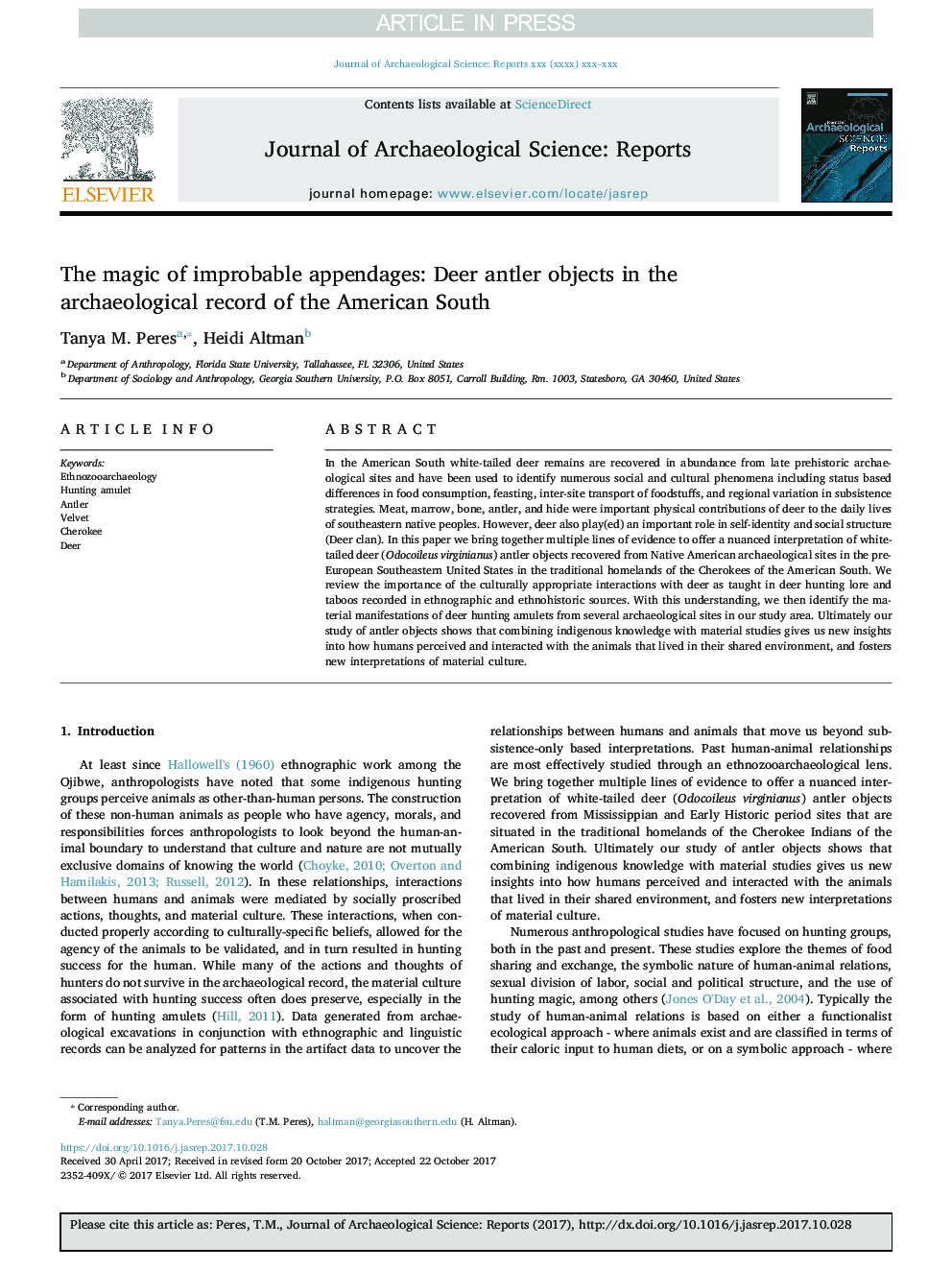| Article ID | Journal | Published Year | Pages | File Type |
|---|---|---|---|---|
| 11005200 | Journal of Archaeological Science: Reports | 2018 | 8 Pages |
Abstract
In the American South white-tailed deer remains are recovered in abundance from late prehistoric archaeological sites and have been used to identify numerous social and cultural phenomena including status based differences in food consumption, feasting, inter-site transport of foodstuffs, and regional variation in subsistence strategies. Meat, marrow, bone, antler, and hide were important physical contributions of deer to the daily lives of southeastern native peoples. However, deer also play(ed) an important role in self-identity and social structure (Deer clan). In this paper we bring together multiple lines of evidence to offer a nuanced interpretation of white-tailed deer (Odocoileus virginianus) antler objects recovered from Native American archaeological sites in the pre-European Southeastern United States in the traditional homelands of the Cherokees of the American South. We review the importance of the culturally appropriate interactions with deer as taught in deer hunting lore and taboos recorded in ethnographic and ethnohistoric sources. With this understanding, we then identify the material manifestations of deer hunting amulets from several archaeological sites in our study area. Ultimately our study of antler objects shows that combining indigenous knowledge with material studies gives us new insights into how humans perceived and interacted with the animals that lived in their shared environment, and fosters new interpretations of material culture.
Related Topics
Social Sciences and Humanities
Arts and Humanities
History
Authors
Tanya M. Peres, Heidi Altman,
